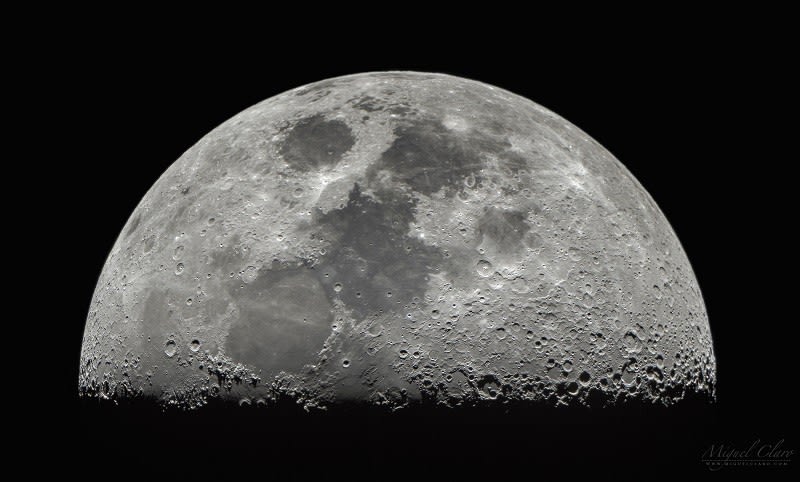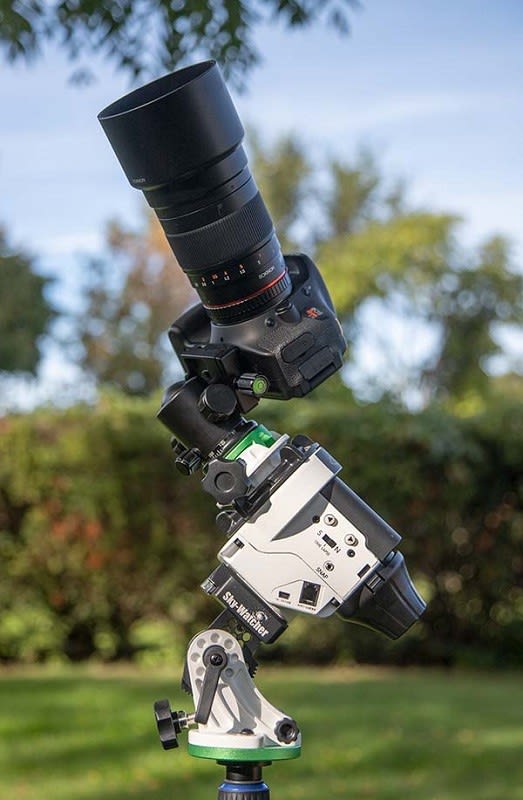Following in the Footsteps of Galileo
Follow articleHow do you feel about this article? Help us to provide better content for you.
Thank you! Your feedback has been received.
There was a problem submitting your feedback, please try again later.
What do you think of this article?
This is the first of a series of articles in which we’re going to look at home science. Hopefully, we'll give you a few ideas of ways to pass the time during the Covid-19 lockdown and get involved in something new. To start us on this journey, this week we will look at the subject of amateur astronomy.
The Cosmic Reef - Hubble's 30th Anniversary Snapshot
Image: NASA
I am writing this less than a week after the 30th anniversary of the launch of the Hubble Space Telescope. To celebrate this birthday, NASA released one of their most impressive pictures to date. Hubble has enabled scientists to discover new facts about the origins of the universe, has advanced our understanding of how stars are born, and has shown the world how beautiful our cosmos can be.
Our ancestors have been trying to make sense of the stars for tens of thousands of years. To celebrate Hubble’s 30th birthday, I thought it would be great to see how we can follow in their footsteps.
From our own homes, we can emulate the observations of Galileo, Herschel and Messier. In fact, modern technology gives us advantages that these giants of astronomy might only have dreamed of. While these pioneers had to build their own telescope, modern optical devices – binoculars, telescopes and cameras – offer superb performance at very low cost. We also have access to centuries of writings on the subject, as well as websites and smartphone apps that help us to know what we’re seeing.
Stargazing
Our galaxy, the Milky Way.
Image: Serge Brunier / ESO via EPA
The simplest way to the night sky is to wait for a clear night, lie back and enjoy the view. As beautiful as the stars are, it is the science that makes them fascinating. Not only are we seeing the stars across a staggering distance, but we are also moving through time. The light that reaches us has been travelling for years. The picture you see is from when the light left the star, and it is interesting to ask what might have happened in the tens, hundreds or even thousands of years since then.
There is one problem that we must face about which the masters never had to worry – light pollution. Modern towns create a huge amount of light, and unless you are lucky enough to live deep in the countryside, this light interacts with atmospheric particles. This means that it might not get dark enough to see some of the fainter features in the night sky. While we are all confined to our own homes, there is little we can do to solve the problem of light pollution, but there is still plenty of things to observe.
If you want to take a closer look, there is a wide range of telescopes or binoculars to choose from. The professional advice is to start with a pair of binoculars. Not only are they easier and cheaper to obtain (if you don’t already have a pair), but they are easier to use. Telescopes will give a better view, but they do take practice to use well and you will need something called an equatorial mount. The ground you are standing on is constantly moving as the earth rotates. An equatorial mount will compensate for the rotation of our planet, allowing your telescope the remain aimed at your target.
Celestial Neighbours
We do not have to look all the way to the stars to see interesting features. The solar system is filled with 7 planets other than our own (If you are as old as me, and went to school when I did, there were 8. Sorry, Pluto). While some are too remote or too close to the sun to see, others are amongst the easiest features in the night sky to spot. As I write this at the end of April 2020, Venus is spectacularly bright in the night sky. Several other planets can be seen with the naked eye, and if you can hold a pair of binoculars steady enough, you can see the moons of Jupiter, the red colour of Mars and the rings of Saturn.
Image: Miguel Claro
Closer to home, our own moon is always worthy of close inspection. Although the visible surface of the moon has been viewed by humans for tens of thousands of years, it is still a beautiful sight, with the flat Mare (“seas”) contrasting with the rugged highlands, all pockmarked with impact craters. For an extra treat, use binoculars to view the moon when it is half-lit. Look at the terminator – the line separating the light and dark sides of the moon – and see the shadows of crater rims and mountains cast by the setting sun. Remember that 12 humans have stood up there.
And if you fancy something a little faster-moving, you can always go satellite spotting. There is a huge constellation of artificial satellites in Earth-orbit performing a bewildering array of tasks, from weather forecasting to electronic snooping. Those close to Earth are travelling at high speeds, orbiting the planet in as little as 90 minutes. If you are looking in the right direction at the right time, they can be clearly seen tracking across the night sky. There are plenty of smartphone apps that will help you spot them as they appear.
Photography
The images generated by Hubble are awe-inspiring and beautiful, but it isn’t necessary to have your own space telescope to capture the wonder of the heavens. With a little bit of planning and the right camera, it is possible to create remarkable pictures from your own home. Take a look at the kit that Trevor from Astrobackyard uses...
Image: AstroBackyard
The good news is that this is just a normal digital SLR camera, fitted with a long lens and installed on the right mount. This type of equipment is not beyond the reach of the amateur photographer. For some inspiration, look at the fantastic pictures created by Ben Brotherton. He is a photographer based in the south of the UK who takes these photograph from his own back garden, proving that you don't need a high mountain or a special observatory to get great results.
Get involved
Astronomy is one of those fields of science that allows you to emulate the pioneers in the field. The night sky is free, and viewing it takes little in the way of equipment. Even if you want to pursue it more seriously, 500 years of innovation gives us tools that would have made Galileo weep with envy. Viewing the night sky and noting your observations places you alongside these heroes. And if you think that there is nothing new left to see, remember that amateur astronomers still play an active role in the discovery of comets and other celestial objects.
Get out there, sit down, look up. You’ll be amazed at what you might find.





